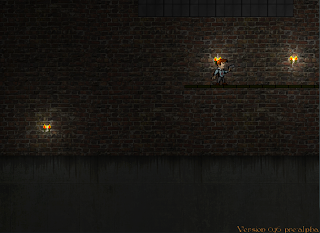How Do Quad Trees Work
You may be familiar with a binary tree. Essentially there's a "root" structure (known as a "node") that branches out into two nodes (binary = two). Then, each of these nodes splits into two of their own. This continues as long as necessary. The nodes that aren't split are called "leaf" nodes.Quad trees work exactly the same way, except the nodes are split into four parts rather than two. This is useful for video games because the screen is a rectangle, and can thus easily be split into smaller subsequent rectangles. Here's a screenshot of a stress-test quad tree in progress:
The small, 8x8 quads represent particles with physics. Each quad you see can contain a maximum of 32 (an arbitrary value) particles before it automatically splits into 4 nodes. The tree cannot go more than 6 levels deep, though, because that would eventually cause a stack overflow due to the recursion inherent to quad trees.
You can see this live, in-action by downloading a demo here (pardon the dependencies, I used my old wrapper classes to write this). Hold keys to generate particles, or use the mouse to set them in certain locations. Right-click the mouse to test for a collision with the large blue quad. The result will show up in the console window as a 1 (true) or 0 (false). You can notice that the operation is performed incredibly quickly, even with an insane amount of particles on the screen. That is the power of a quad tree.
Note: If you get DLL errors, you may need to install the VC++ redistributable from here.


